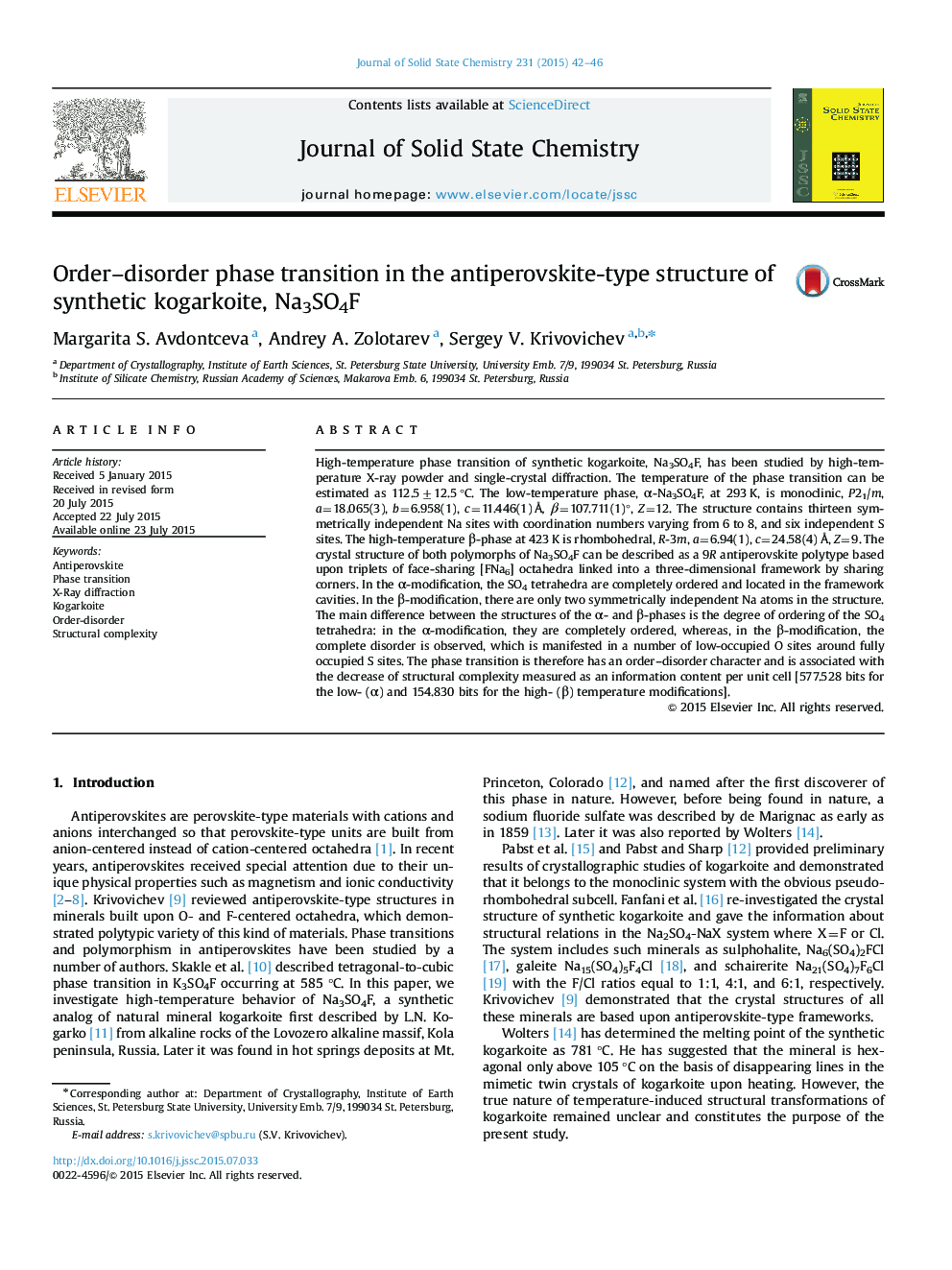| Article ID | Journal | Published Year | Pages | File Type |
|---|---|---|---|---|
| 1329511 | Journal of Solid State Chemistry | 2015 | 5 Pages |
•Phase transition in Na3SO4F (kogarkoite) has an order–disorder character.•Antiperovskite framework of F-centered octahedra has a high stability.•Information-based structural complexity decreases across the phase transition.
High-temperature phase transition of synthetic kogarkoite, Na3SO4F, has been studied by high-temperature X-ray powder and single-crystal diffraction. The temperature of the phase transition can be estimated as 112.5±12.5 °C. The low-temperature phase, α-Na3SO4F, at 293 K, is monoclinic, P21/m, a=18.065(3), b=6.958(1), c=11.446(1) Å, β=107.711(1)°, Z=12. The structure contains thirteen symmetrically independent Na sites with coordination numbers varying from 6 to 8, and six independent S sites. The high-temperature β-phase at 423 K is rhombohedral, R-3m, a=6.94(1), c=24.58(4) Å, Z=9. The crystal structure of both polymorphs of Na3SO4F can be described as a 9R antiperovskite polytype based upon triplets of face-sharing [FNa6] octahedra linked into a three-dimensional framework by sharing corners. In the α-modification, the SO4 tetrahedra are completely ordered and located in the framework cavities. In the β-modification, there are only two symmetrically independent Na atoms in the structure. The main difference between the structures of the α- and β-phases is the degree of ordering of the SO4 tetrahedra: in the α-modification, they are completely ordered, whereas, in the β-modification, the complete disorder is observed, which is manifested in a number of low-occupied O sites around fully occupied S sites. The phase transition is therefore has an order–disorder character and is associated with the decrease of structural complexity measured as an information content per unit cell [577.528 bits for the low- (α) and 154.830 bits for the high- (β) temperature modifications].
Graphical abstractHigh-temperature phase transition of synthetic kogarkoite, Na3SO4F, revealed the existence of the monoclinic-to-rhombohedral phase transition at 112.5±12.5 °C. The phase transition has an order–disorder character and is associated with the decrease of structural complexity.Figure optionsDownload full-size imageDownload as PowerPoint slide
